A Kitchen Garden Is the New Trend That Brings Gourmet Flavor to Your Countertops
It's surprisingly easy to grow your own delicious with these expert tips!
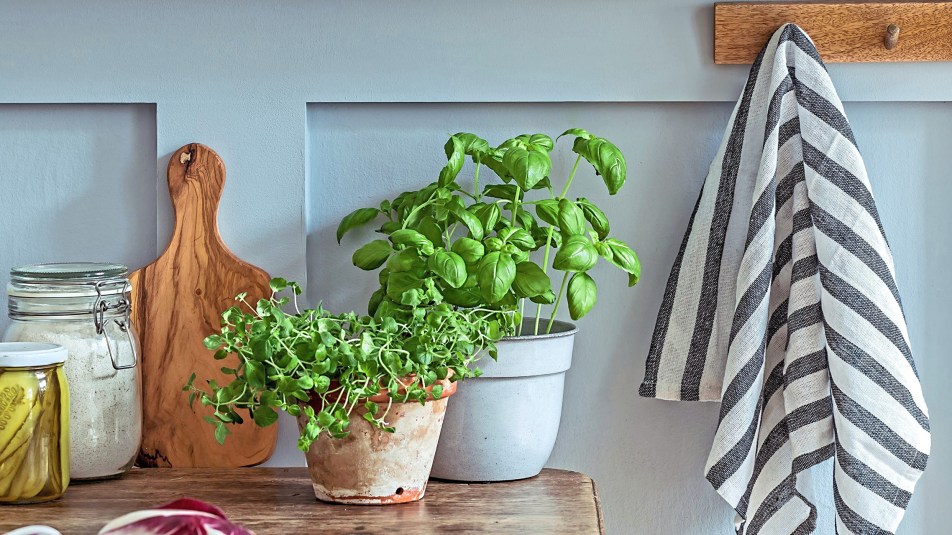
Looking for a way to pretty up your kitchen with refreshing flair and perk up your meals with flavorful herbs and homegrown produce? Try planting your very own kitchen garden! With just a few pots, seedlings, soil and a sunny spot in the heart of your home, you can create an indoor garden that looks beautiful and allows you to enjoy the fragrance and flavor of fresh herbs and edible plants any time of year! The best part? You can start the plants in pots indoors, then move the pots outside to your patio or porch once the weather warms. Here, gardening expert Jan Johnsen, author of Gardentopia, shares the easy steps and care tips for growing a flavorful, fabulous kitchen garden.
What is a kitchen garden?
“A kitchen garden is a collection of healthy, edible plants — herbs, microgreens and even vegetables like cherry tomatoes — that can be grown indoors and outdoors,” says Johnsen. “They are fun to grow and are a great way to enjoy the health benefits of fresh herbs.” You can use the herbs to add flavor to your favorite meals, soups, sauces, meats and more, and can incorporate edible plants like microgreens and cherry tomatoes into salads, sandwiches and charcuterie boards.
All you need is a spot in front of a sunny window and a few planting essentials to get started. Keep reading for the easy planting ideas and how-to’s.
Kitchen garden idea #1: Rosemary for sauces and soups
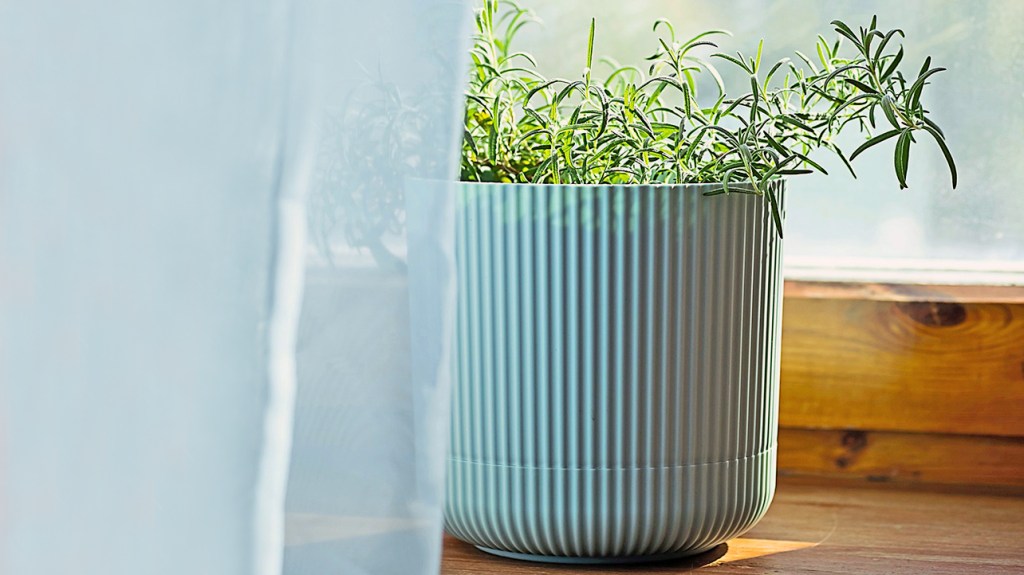
Stirring fresh rosemary into your favorite hearty sauce or soup recipe as it simmers infuses the dish with a delicious smoky taste, notes Johnsen. Plus, it adds a delicious herbal flavor to spring and summer cocktails when used as a garnish. (You can also use it to make delicious rosemary garlic steak fries.) To grow this herb, first nestle the roots of a rosemary seedling or “start” (an already-sprouted baby rosemary plant) into a soil-filled pot. “Rosemary loves lots of sun and its soil on the dry side,” says Johnsen. To achieve these conditions, give the plant 6 to 8 hours of sun a day and water when soil is dry to the touch. Begin harvesting once the plant is at least 6 inches tall.
Kitchen garden idea #2: Microgreens for sandwiches
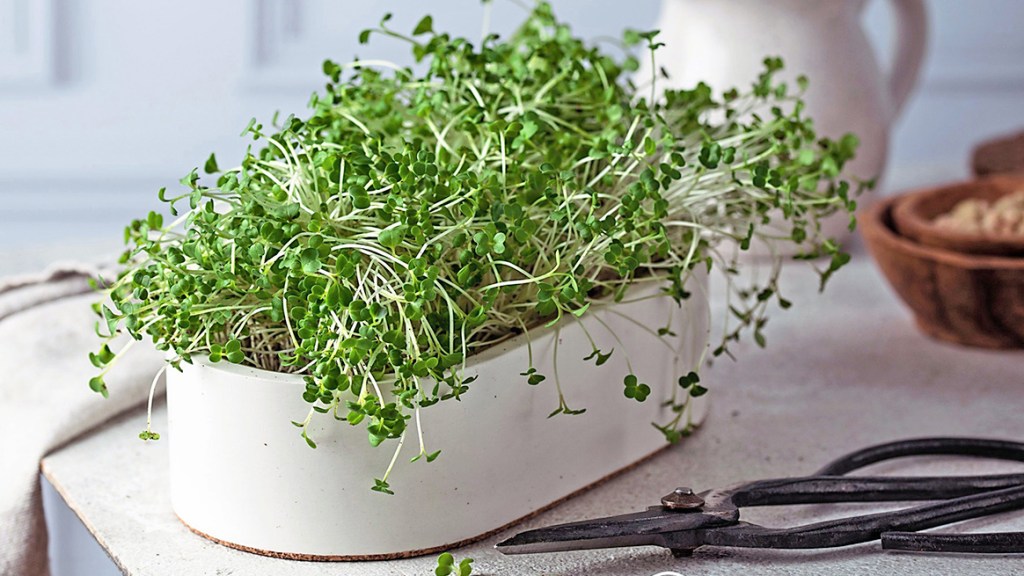
“Healthy microgreens provide a pleasant peppery taste and delicious crunch when sprinkled in sandwiches or on salads,” says Johnsen. “Plus, they are very easy to grow from seed.” To start, fill a small bowl with coconut coir (a coconut husk-derived planting medium that’s available at garden centers), then cover the surface with curled cress seeds or daikon radish sprouting seeds; water well and cover with a plate. Once seeds sprout (in a day or two), remove plate and set bowl in a sunny spot. Harvest when greens are 2 to 3 inches tall.
Kitchen garden idea #3: Basil and watercress for salads
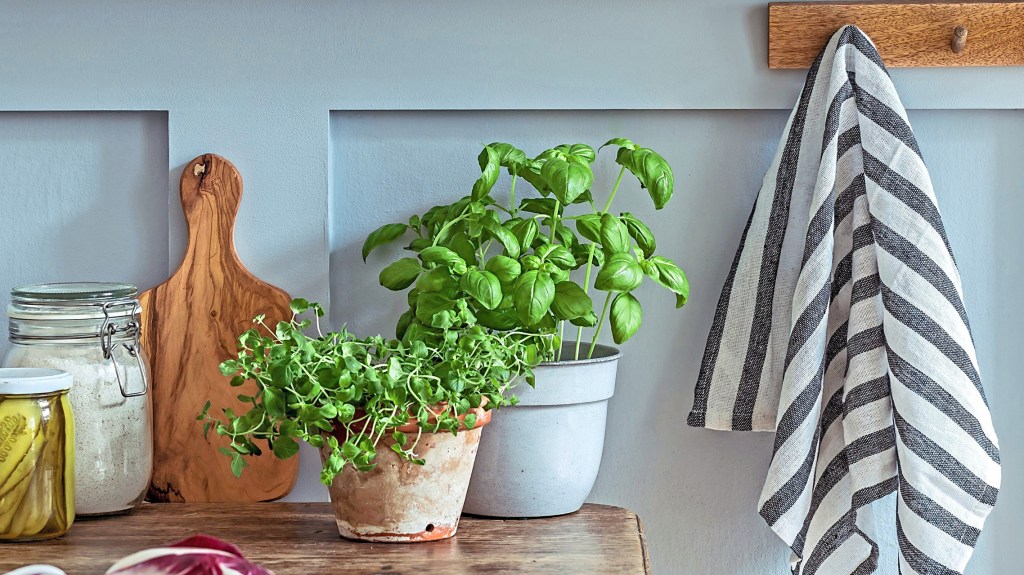
“Watercress and basil are two great choices for a kitchen garden,” says Johnsen. “This duo adds flavor and makes a pretty garnish on salads.” To plant them, simply press watercress and basil seeds into medium-sized pots filled with potting soil and set in a warm, sunny spot, keeping the soil moist. “Basil is a sun lover, so place it in a south-facing window where it can get at least six hours of light a day,” notes Johnsen. “And watercress requires at least four hours of sunlight per day when grown indoors.” Seeds should sprout in about 2 weeks. Begin harvesting once plants are at least 6″ tall, then use to give salads an extra hit of bright flavor.
Kitchen garden idea #4: Cherry tomatoes for pasta dishes
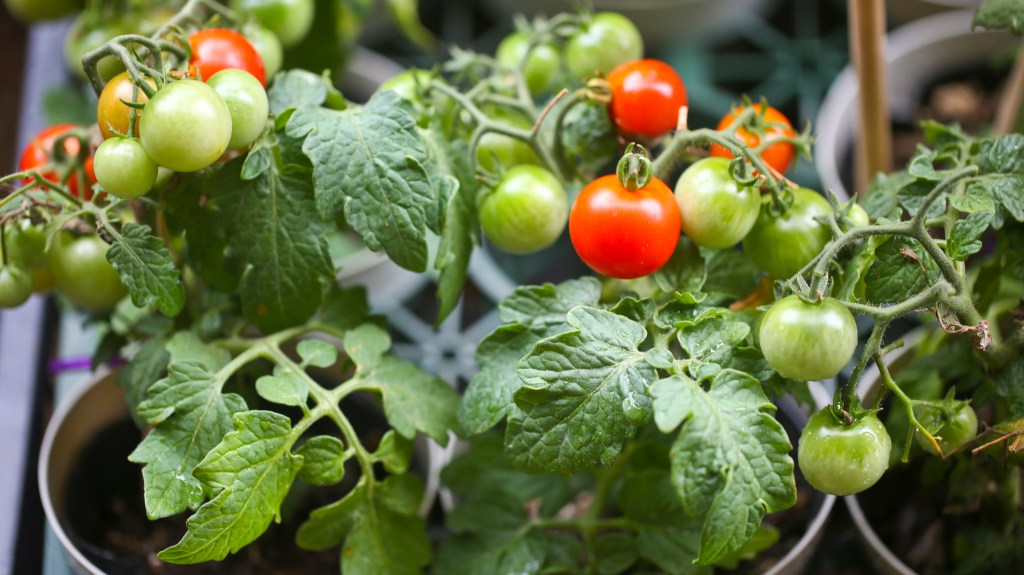
“Cherry tomato plants are well-suited for growing in pots, and the gems are a sweet treat when tossed into pasta dishes or served on a charcuterie board,” says Johnsen. To do: Nestle roots of a cherry tomato seedling into a soil-filled pot that’s 14 inches in diameter. They need full, direct sun, typically 6 to 8 hours daily, notes Johnsen. Water the pot deeply and then let it dry out for a few days before watering again, she says. If you choose to move the pot outside once the weather warms, hot, sunny conditions will require more frequent watering. Harvest when tomatoes reach their mature color.
Kitchen garden idea #5: Thyme, oregano and tarragon for grilled meats
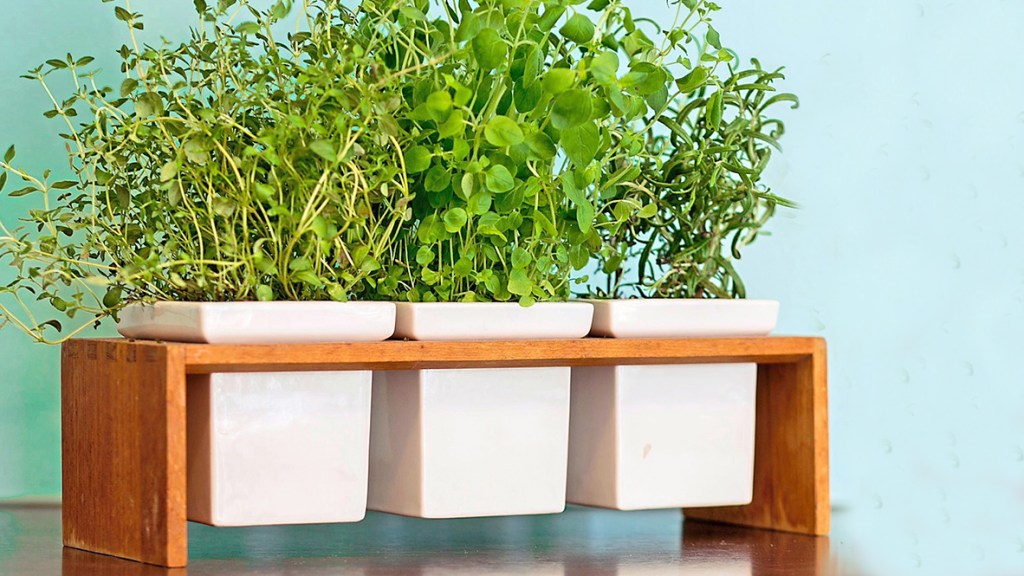
“Thyme, Italian oregano and tarragon are good choices for a kitchen garden because they are easy to grow, their leaves can be harvested rather quickly and they are so useful in cooking,” says Johnsen. Plus, the trio boasts strong, earthy flavors that are sure to make meats (like these rib-eye steaks) even tastier. To grow them in your kitchen, nestle roots of thyme, Italian oregano and tarragon seedlings into small pots filled with well-draining soil (to encourage proper drainage). “These herbs need maximum light and prefer their soil slightly dry,” notes Johnsen. Set the pots in a very sunny spot and let soil dry out slightly between waterings. Harvest once plants are 6″ tall, then chop up the herbs’ leaves and use as a dry rub on beef, chicken or pork.
For more gardening tips, keep reading!
How to Germinate Seeds Indoors: Gardening Pros Share Their Top Tricks for Success
Seed Swap: The Free (and Fun!) Way to Get a Jump Start on Your Garden Right Now
5 Plants That Repel Mosquitoes From Your Yard, According to Garden Pros

















